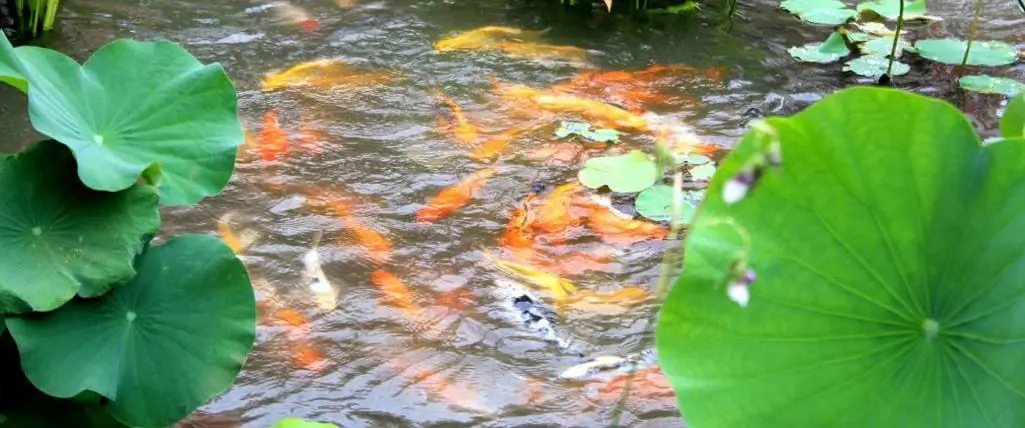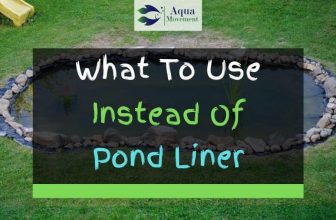How to Add Fish to Your Backyard Pond
Perhaps, you think, things are super easy. You just need to dig a pond, add some fishes, and you are done.
Well, you are wrong.
Just like a cat or dog owner, the safety of your fishes too needs to be your priority.
And for the purpose, you have to build your pond properly and then introduce the fishes the right way. If you do not do this correctly, then the lives of your fishes will be at risk.
Obviously, you would not want to create a beautiful pond, introduce lovely fishes, only to see that your fishes die soon after, leaving your pond lifeless.
So, it is very important to know how to add fish to your backyard pond in the correct way. And, this is exactly what we are now about to discover.
Table of Contents
Make Sure the Pond Is Fish Ready
A fish ready pond is the one which is healthy, has the right water volume, correct depth, aeration, filtration, and circulation.
Also, it must have enough plants.
The correct water depth
The water conditions in your pond need to be right both for winters and summers. Coldwater fishes go dormant when the temperature drops.
They remain motionless, close to the bottom of a pond. So, you have to make sure the water never freezes, and the surface has open air holes (at least one).
The ideal water depth varies depending on the type of fish your pond will have. If you plan to keep goldfish, the right water depth will be 24-inches. And, if you want to keep koi, the preferable water depth will be 24-36 inches.
It will be a good idea to use a recirculating pump. That will prevent freezing near the pond surface and thus ensure proper airflow.
The right water chemistry
It will be best if the pond water has no ammonia, nitrites, phosphates, and chlorine at all. If it does, it must be within safe limits.
[amazon box=”B0002DJNN0″]
You can use a pond test kit to find out the levels. Some of them even come with pH testers, so you will be able to check if that range is ideal as well.
Do keep enough aquatic plants
[amazon box=”B00YZ6CH0G”]
Your pond should have a variety of aquatic plants. This is important to offer hiding spots, shelter, and even food to your fishes.
It will be great if 60 % of the surface of your pond water is covered in plants.
15 Best Plants For Your Pond Reviewed
13 Best Plants for Koi Pond – With Pictures
Be Patient
Do not rush. It is natural for you to be eager to introduce fishes to your pond and watch them swim around happily.
But fishes should be added only after you have double-checked that everything is okay.
Also, you must wait for a few weeks so that your pond naturalizes, and some greens start forming on your rocks. It should not look like a crystal-clear swimming pool but like a natural pond.
Life has to begin growing in your pond to offer you the desired results.
Be Watchful of the Numbers
Before you get to learn exactly how to add fish to your backyard pond, remember, you must introduce only enough.
You should never overcrowd; else it will affect the health of the fishes and your entire pond as well. This will lead to the death of fishes, and your pond water will look murky and dirty.
While deciding the number of fishes, do not consider the babies you are buying now but the adults that they will grow into.
Ideally, it will be safe to add one adult goldfish for every 100 gallons of water and one adult koi for every 400 gallons.
Begin Introducing the Fishes

Surely, you must have purchased your fishes from a nice shop. They likely have given you the fishes in a plastic bag that has enough air inside and is sealed with an elastic.
You can now move towards the following steps.
-
Adjust the temperature by floating your fish bag
- The first step will alter the temperature of water in your fish bag and help it match the temperature of your pond water.
- Make sure you are gentle and quiet, and you do not stress or scare your fishes.
- Float your fish bag on the surface of the pond. Let it stay for about 30 minutes or until you notice the temperature of both the bag and the pond water is almost the same.
- Your fish bag should not receive direct sunlight, or else there are chances of overheating. If there is no shady area in your pond, then you may cover the bag using a towel.
-
Allow some pond water into your fish bag
- Now, you need to gradually introduce your fishes to the pond by first allowing some water into the bag and letting it mix with the home water of your fishes.
- Open the bag and allow some pond water inside it.
- Close your bag tightly and make sure there is enough air inside.
- Again allow the bag to float on the surface of your pond for about 15-30 minutes. Make sure to keep it away from direct sunlight.
- If everything looks okay, it is time to introduce your fishes.
-
Release your fishes
- Now that the water temperatures are the same, and your fishes shave had a taste of the pond water, it is time to release them into your pond.
- Make sure there are no noises in the background, and it is as calm as can be.
- Kneel down, open your fish bag, and lower it gently into your pond. The pond water will begin coming in, and the fishes will start swimming out.
Conclusion
Now that you know how to add fish to your backyard pond the right way, you will face absolutely no problems at all. Remember, your true responsibility begins after you have introduced them to your pond. If you take really good care of them, then they can live for a very long time.
Goldfish do not live too long, but koi can easily survive for 20-30 years or even more. So, do take the best care of them and they will always be healthy, and swim around gleefully, bringing a smile on your face each time you watch them.
13 Best Types of Backyard Pond Fish (With Pictures)




